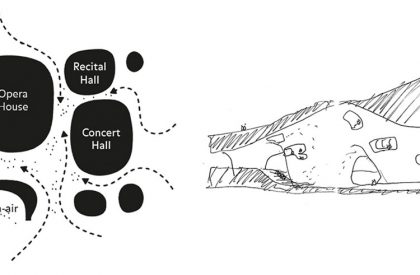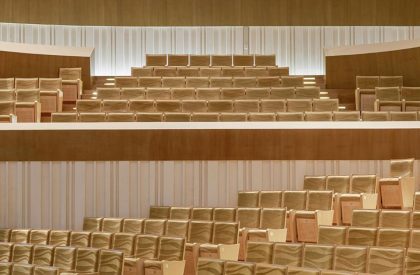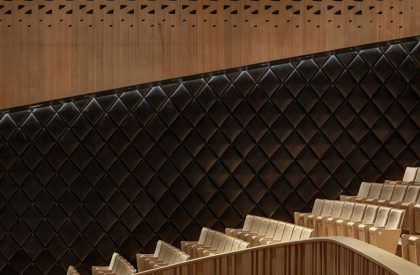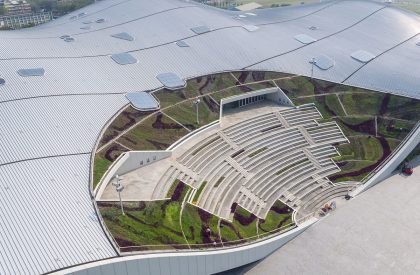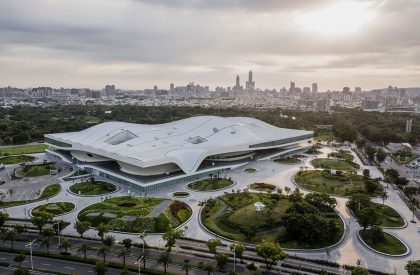Excerpt: National Kaohsiung Center for the Arts is a performance complex designed by the architectural firm Mecanoo. The open, protective shape of the banyan tree becomes a springboard for the design. Its expansive sheltered crown becomes the Banyan Plaza, a partially enclosed public space where the cooling wind can freely flow. Between the four formal performance halls, which form the ‘trunks’ that support the undulating roof, a topography rising from ground level to five meters becomes part of the park’s landscape. Where the roof touches the earth, the building becomes an amphitheatre, open towards the surrounding parkland which, in turn, becomes its stage and set.
Project Description
[Text as submitted by Architect] Kaohsiung is an informal, lively city of almost three million inhabitants. Not only is it the second largest city in Taiwan and one of the world’s largest seaports, but it is also host to a dramatic sub-tropical climate of typhoons, high temperatures, heavy rainfall, and regular earthquakes. The new 140,000 square-meter performance complex must cope with all of these extremes.

Barking dogs and banyan trees
The location for this building is a former sixty-five-hectare military compound in the center of the metropolitan area of Kaohsiung. This place is intended to become a sort of ‘Central Park’ for the city. When we first visited the site in 2006, it was still a fenced-off zone of military barracks occupied by many wild, barking dogs. It’s also dense with banyan trees, their twisting trunks and branches having gradually interlocked over decades. The form of the banyan reflects the local climate.


A continuation of the park
We wonder whether the banyan tree could help us to create a combination of formal and informal performance spaces. This way, the building would be full of life around the clock, a natural continuation of the park. The open, protective shape of the banyan tree becomes a springboard for the design.

Its expansive sheltered crown becomes the Banyan Plaza, a partially enclosed public space where the cooling wind can freely flow. Between the four formal performance halls, which form the ‘trunks’ that support the undulating roof, a topography rising from ground level to five meters becomes part of the park’s landscape. Where the roof touches the earth, the building becomes an amphitheatre, open towards the surrounding parkland which, in turn, becomes its stage and set.

Cargo ship
Each performance venue and foyer have its unique atmosphere and creates one fluidly connected space. The walls and continuous ceiling surface of the Banyan Plaza are a neutral white, allowing artificial light and projections to alter the mood. With twelve chandeliers suspended against the billowing form of the plaza, the building can dress up for the night! But a question remains: how do you materialize a space the size of a cargo ship, almost 160 meters wide and 225 meters long? Should it be clad in stucco, tiles, aluminum, or steel?


A Piece of Banyan
In 2008 we were invited to design a pavilion for the Salone del Mobile in Milan. To research and test the proposed ceramic tile, we decided to build ‘A Piece of Banyan’ – a 1:4 scale model of a sliced fragment, twenty metres long and three and a half meters wide cladding for the Banyan Plaza. For one, it’s raining heavily in Milan, and it’s impossible to glue the tiles to the ceiling.

We continue our search for the building’s skin. The idea arises to use the finely tuned, locally accessible techniques of Kaohsiung’s shipbuilding industry. We convince everyone that the Banyan Plaza should have a cargo ship’s detailing, not a luxury yacht. We ultimately want the building to look like a ship on the land.


The four halls
Each of the four performance halls has its acoustic challenge, so we collaborate with acoustician Albert Xu. He constructs a 1:10 scale model to test the performance of the most complicated venue: the 1,981-seat Concert Hall. Despite its size, we want the theatre to have an intimate feel. Wouldn’t it be great if every audience member could see the pianist’s hands? We chose the shape of a stepped vineyard with a stage at its center so that terraces at different floor heights encircle the podium. With seating on all sides of the stage, the audience is close to the performance. The public enters the oak-lined from the ground floor, and spiraling ramps lead them to their golden seats.


The 2,236-seat Opera House is arranged as a horseshoe with three circled balconies. The seating is upholstered in a mixture of red and purple fabrics with a pattern of Taiwanese flowers, contrasting with the darker walls. This theatre is not only suitable for Western opera, with an orchestra of over seventy musicians but can also be acoustically adapted to accommodate Chinese opera by maneuvering a suspended acoustic canopy.
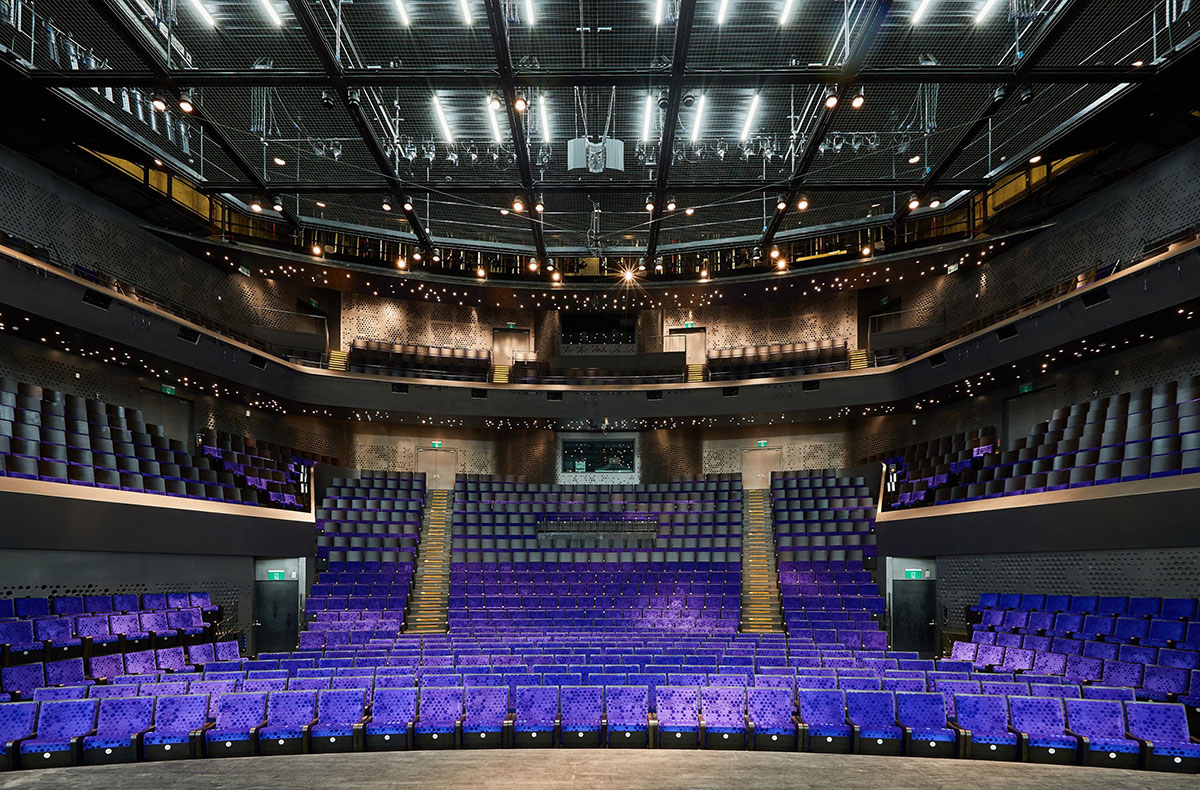
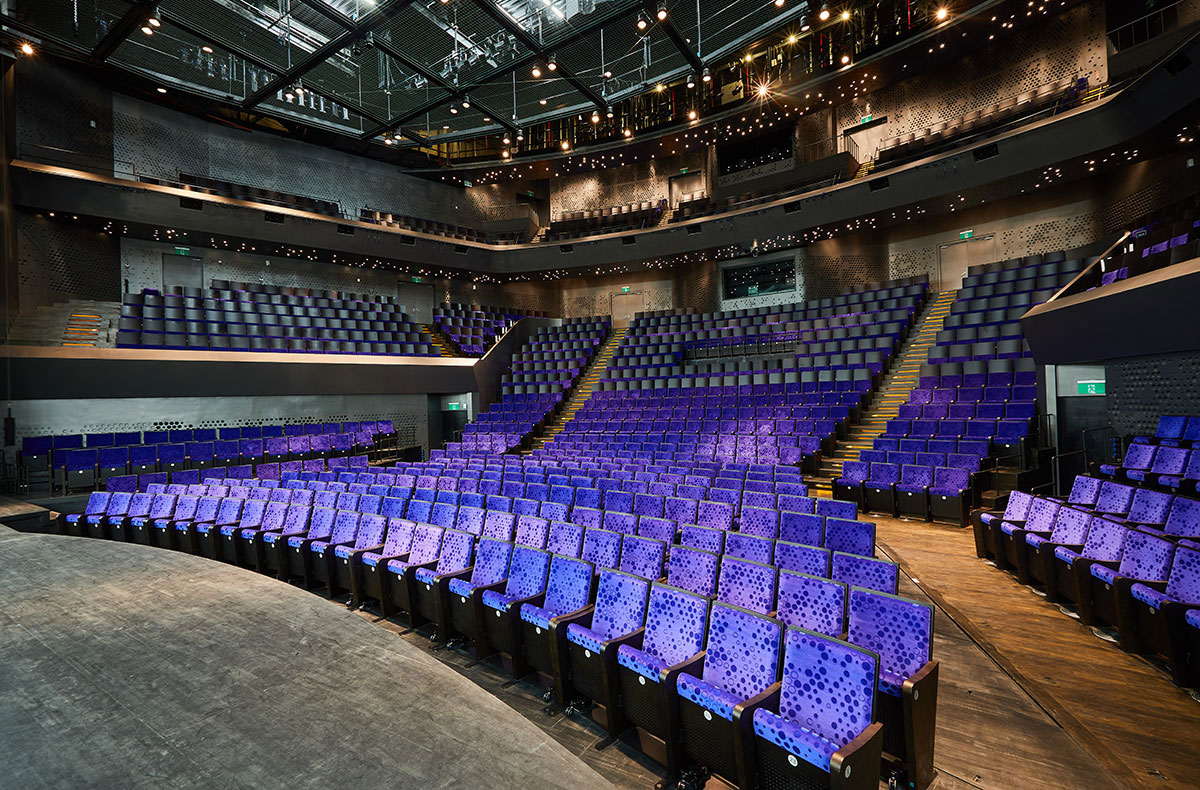
The Playhouse, with its 1,210 seats in Mecanoo Blue, is designed to host a variety of drama and dance performances. Flexibility is the core element in the design of this multifunctional space. The layout is adaptable and can be changed from a typical proscenium stage with the audience in front to a thrust stage with the audience on three sides.


The 434-seat Recital Hall has the most intimate atmosphere of the four. Its asymmetrical composition and seating across two levels are designed for chamber music and recital performances. The seats have the same golden fabric as the Concert Hall, and oak lines the walls. The upper part of this hall is enclosed by a circle of sound-absorbing curtains, allowing for the reverberation time within the space to be tuned to specific types of performance.









